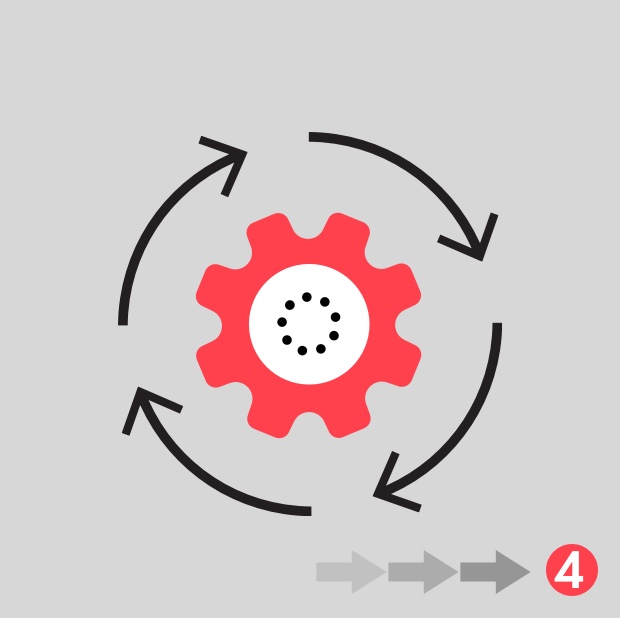What issue can we solve for you?
Type in your prompt above or try one of these suggestions
Suggested Prompt



Transportation & Mobility
From Automaker to Ecosystem Driver: 4 Stages To Orchestrate a Digital Mobility Ecosystem
Today’s consumers are more experience-driven than ever.
Delivering a best-in-class app or website experience is no longer enough. Automakers must deliver best-in-class experiences across an integrated set of apps, websites, showrooms and vehicles.
The next level in customer experience will be achieved by integrating disjointed touchpoints—and curating third-party solutions—to deliver seamless, end-to-end mobility services for automotive customers.
Automakers must become ecosystem orchestrators—offering products and services built around a single platform.
A mobility ecosystem involves a network of industry players that collaborate on delivering products, services and solutions to a common set of customers. In working together, ecosystem participants improve operations and address customer needs that cannot be met by a single company alone. An orchestrator oversees the process to ensure customers receive value through a convenient, integrated experience.
To become an ecosystem orchestrator—including developing, deploying and evolving an ecosystem of mobility offerings—here are four stages automakers must go through:
-
![]()
Integrate existing mobility solutions onto a single platform
-
![]()
Expand the depth & breadth of mobility offerings through acquisitions and joint ventures
-
![]()
Build a marketplace for participants to offer third-party solutions
-
![]()
Continuously evolve the ecosystem experience

Integrate existing solutions onto a single platform
Today, automotive experiences are fragmented and inconsistent across touchpoints.
Take the use case of car ownership, for example. To schedule service appointments, track vehicle costs and purchase auto parts, customers must switch between apps, websites and dealer touchpoints—each with a different set of interactions and conventions.
As automakers launch new digital offerings, a frictionless omnichannel experience is more important than ever.
Today, the website of an Original Equipment Manufacturer (OEM) looks and functions one way, while each dealer site may have a different experience, despite following the same guidelines. Integrating these channels onto a single platform owned by the OEM creates a cohesive experience for the customer. The customer doesn’t know when they’ve switched from the OEM site to the dealer site.
For customers, integrating existing solutions onto a single platform offers a more seamless experience across pre-purchase vehicle evaluation, financing (including insurance, warranties and loans), home charging, servicing and more. A modular ecosystem architecture enables customers to select services that best meet their lifestyle needs. A modular architecture also enables automakers to add or remove services as technology and consumer needs change.
For OEMs, launching a centralized platform can save time and money when they want to make updates to their digital offerings.
SIXT offers a leading example of this through its integrated set of solutions around shared mobility. Through its platform, which is accessed via a website or app, customers can choose from a range of rental solutions, including e-scooter and bike rentals, short-term car rentals, medium-term car subscriptions, car leases, ride-hailing and public transit. Customers can combine services depending on the trip type, trip length, number of travelers and other personal factors. Each part of the journey is accessed through the same platform, so customers have little reason to switch to another shared mobility provider.

Expand the depth and breadth of mobility offerings
With a technical backbone in place, platform owners can focus on expanding the depth and breadth of their service offerings. In this step, automakers must venture beyond their core offerings, identify any gaps in the customer journey and source solutions that fit seamlessly into their customers’ lives.
The post-purchase and ownership experience is often overlooked as an opportunity to engage and retain customers. However, there's a significant opportunity to nurture brand loyalty after the sale and throughout the three- to five-year ownership period of a vehicle.
Specifically, the connected vehicle market—including usage-based insurance, service subscriptions, over-the-air updates and electric vehicle charging—will bring massive opportunities to create new revenue streams in the coming years.
“OEMs will need to engage customers at a much higher cadence and with new branded experiences, such as offering mobility services, over-the-air updates, functionality on-demand and adjacent services—all of this will become the new standard,”
Matthias von Alten , Transportation & Mobility Global Strategy Lead at Publicis Sapient
The talent and organizational capabilities needed to build these software solutions will be substantial. Automakers must determine which aspects of the mobility ecosystem to develop and which to acquire, build jointly or outsource entirely.

Build a marketplace of partners and third-party solutions
Today, many of the largest software ecosystems consist of thousands of partners. Automakers will need to rely on suppliers, strategic partners, industry alliances and acquisitions to create and capture value to enhance their platform.
Ecosystem orchestrators will achieve outsized results by attracting partners that provide complementary—and even competing—services that shape the ecosystem into a one-stop marketplace for customers. The challenge is ensuring the platform is valuable enough for service providers to dock in.
The collaborative nature of digital ecosystems means partners tackle problems and challenges greater than any one company can. This is particularly relevant as the automotive industry faces large-scale challenges, including EV adoption, changing dealer roles, an expanding connected car market and advances in autonomous driving. Similar to the natural world, diversity creates ecosystems with greater stability and resilience in the face of disruption.
Strategic partnerships enable powerful synergy. A recent example is the strategic partnership between Emil Frey France and Arval to launch full-service vehicle rentals for business and professional customers. Each partner brings complementary expertise, with Emil Frey France bringing distribution capabilities via its retail site and sales teams and Arval bringing contract management capabilities via its middle and back office operations.
It takes incredible engineering power to develop a platform for marketplace participants to dock in at different points in the consumer lifecycle. Automakers that successfully deploy this strategy will enjoy competitive advantage for years to come.

Continuously evolve the ecosystem experience
Convenience and best-choice pricing—these are elements ecosystem orchestrators must continuously deliver to customers. The more effectively automakers can create continuous value for customers and providers through their ecosystems, the more likely those customers and providers will remain loyal to that platform.
By collecting customer, vehicle and service data across offerings, automakers can continuously improve the ecosystem’s product mix and customer experience. Employing data to create personalized sales and service interactions will be key to boosting customer loyalty and lifetime value.
Today, the organizational set-up is still fragmented and siloed across sales, marketing, after-sales and financial services. OEMs need to break down these silos not only within their own organizations but also in opening up to external partnerships. A more integrated mindset and way of working will enable OEMs to build the platform and marketplace required to transform into a true ecosystem orchestrator.
“It takes an ongoing process to evaluate and optimize the entire ecosystem and to win and nurture loyal customers. OEMs need the right organizational structure, capabilities, tech stack and analytics tools in place to enable a 360° view of the customer,”
Matthias von Alten , Transportation & Mobility Global Strategy Lead at Publicis Sapient
Now’s the time to be bold
Speed is critical to establishing a strong market position for OEMs. Many automakers have started developing solutions and identifying strategic partnerships, but they need to speed up their efforts. First movers will have a competitive advantage as they build and continuously evolve a foundation of technical infrastructure, strategic partnerships and long-term customer relationships.
Related Reading
-
![]()
Article
Connected Ecosystems in Automotive – Telematics
A recent Publicis Sapient survey found 60% of drivers feel like time spent traveling is a waste of time and are interested in ways to get more out of it.
-
![]()
Article
Why OEMs Must Prioritize Customer Experience
Consider these four steps to build a loyal base of customers who can’t help but to stay in your brand’s ecosystem.
-
![]()
Article
Automotive Industry Future Sales Model
4 Approaches to Customer Experience, Loyalty and Value.










